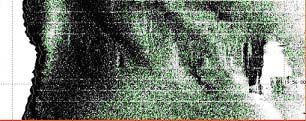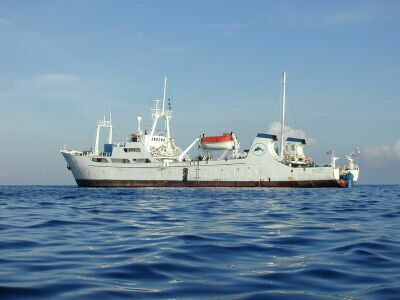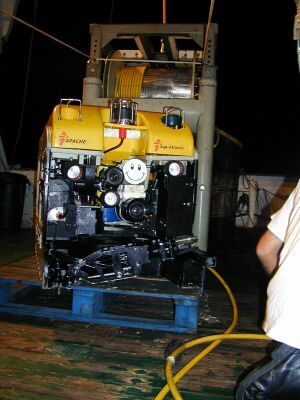Discovery of USS Maine
|
||
The mysterious blastThe USS Maine was a 106 m long second-class battleship built during 1888-1895. In 1898 she was sent to Havana to protect US interests during the local revolt against the Spanish government. On February 15, her forward gunpowder magazines exploded, killing 266 sailors and sinking in the harbour. The cause of the explosion was unknown, but US press started a rather exaggerated campaign, blaming Spain, resulting in public opinion to declare war against Spain. And so it went. Spain lost the war and Cuba became an independent nation. In 1911-12 the wrecked warship was re-floated, investigated, and then towed to deep water to sink again, resting forgotten for many years. The 1911 investigation found plates that had been bent inward during the explosion and concluded that the ship had been sunk by a mine. But in 1976, Admiral Hyman G. Rickover claimed that the explosion was more likely caused by spontaneous combustion of coal in a bunker. DiscoveryIn October 2000, Ernesto Tapanes, Paulina Zelitzky and other crew of the Exploramar team discovered the well-preserved, but broken up, hull of USS Maine, three miles off the Cuban coast on 1150 m depth. In the same deep-water area in Cuban territory several other wrecks were located, one of which is a large wooden wreck that seems well-preserved, so perhaps wooden wrecks are preserved longer in some deep salt waters. InvestigationsFor their wreck search and investigations, the Exploramar team uses the Cuban survey ship Ulises with side scan sonar and a modern ROV. The company behind Exploramar, ADC, has a contract with the Cuban government, making a 50-50 split of any salvaged treasury from Cuban waters. However, according to Exploramar, no artefacts have been removed from the USS Maine. The purpose is only to document the USS Maine, and on all expeditions on Cuban water, a Cuban underwater archaeologist is onboard the ship. ContactThe Exploramar Project is run by ADC International, Inc., a Bahamas-based company. The Exploramar Project cooperates with the University of South Florida, National Geographic Society and others. ADC has also found strange anomalies on the sea bottom, that have a man-made appearance, but that remains to be investigated, and that is a different story. Mr
Ernesto Tapanes is
President of ADC International, and can be contacted through email exploramar@hotmail.com. Per Åkesson, January 2002 Video
Links |
contemporary drawing wreck area north of Havana sidescan image the research ship the ROV (underwater robot) stern peak of the Maine filmed by ROV |
|






 Back to Nordic Underwater Archaeology
Back to Nordic Underwater Archaeology